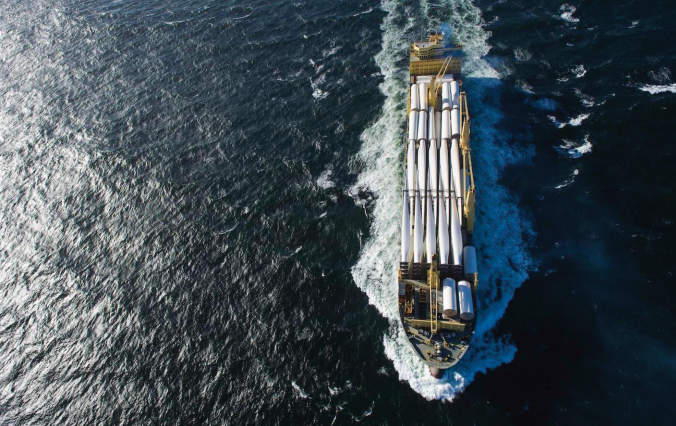
AAL, one of the world’s largest multipurpose vessel operators, is principally engaged in the project, heavy lift breakbulk, and dry bulk sectors. Unlike many MPV operators, the Singapore-based AAL’s business model includes a strong liner component that connects Asia, Oceania, Europe, and the Americas through a number of regular calls.
With the global economy being of great concern, particularly the slowdown in China, Houston-based Henrik Hansen, AAL’s general manager for the Americas in an interview with AJOT was asked how China’s economic slump impacted bulk, breakbulk, and project shipping. Hansen said, “In terms of exports from China to North America, the economic slump has had an impact on the cargo volume shipped from Chinese ports. Volumes have decreased and, as a result, ocean freight rates have been on a decline. Whether this is temporary or a situation we can expect for the next 6-12 months remains to be seen.” Hansen added, “The port congestion in main ports in China has decreased due to the decline in export volumes. Contractual cargo [read project cargoes] continues to be shipped at a regular pace, whereas a slowdown in new, non-contractual cargoes has become apparent.”
The inflationary trend has dampened demand and ocean container freight rates have tumbled. Although container freight rates aren’t generally connected to dry bulk, breakbulk, or project rates, there is a linkage as commodities spillover between ocean shipping modes. As Hansen explained, “Capacity demand for containers and commodities traditionally shipped in containers is lessening. We are at the point where things are ‘going back to normal in terms of the means of transportation and the two-year high is no more. This does impact freight rates, port congestion, and lay-down storage space in North American ports. There are many new challenges ahead of us in an ever-changing market.”
And of the current softening of ocean freight rates, Hansen said, “The breakbulk rates have already been impacted by the decrease in box rates. The decline in container space on MPP tonnage over the past quarter along with the current slowdown in China has been the main reason to lower rates, not forgetting the current economic challenges and uncertainties globally. The question to be asked is how much of an impact it will have long term?”

Because of AAL’s liner shipping service, with the availability of slots (and with long delays at container terminals), the ocean carrier was already made an alternative to container shipping. But as Hansen said of the cross-over freight, breakbulk, and project are the prime sectors, “AAL has also been participating in container shipments over the past 18-24 months but never to the point where we lost focus on or neglected to prioritize our core business, being project, breakbulk and dry bulk cargoes. With that in mind, despite new challenges the marketplace will throw at us, we feel confident about the future and the support of our clients.”
Perhaps the most visible belief in the future of the MPV market is the willingness to invest in ships. And Hansen remarked AAL has a “newbuilding program of 6 multi-purpose dry cargo ships and third generation heavy lift vessels, the Super B-class. All six vessels are planned for delivery during 2024 and will become part of the existing fleet of AAL. The super B class ships have a crane capacity of 700 tons and cargo capacity of 60,000 ft. The design of two long-length box-shaped holds with adjustable pontoons and no centreline bulkheads enable the ships to accommodate a variety of commodities from dry bulk, heavy lift, and out-of-gauge cargo to general break bulk cargo.”


Follow us on social media: